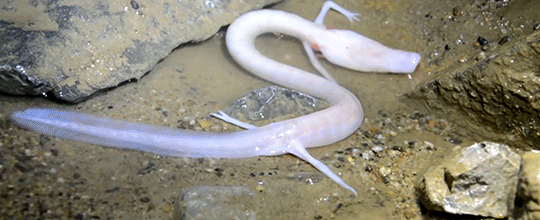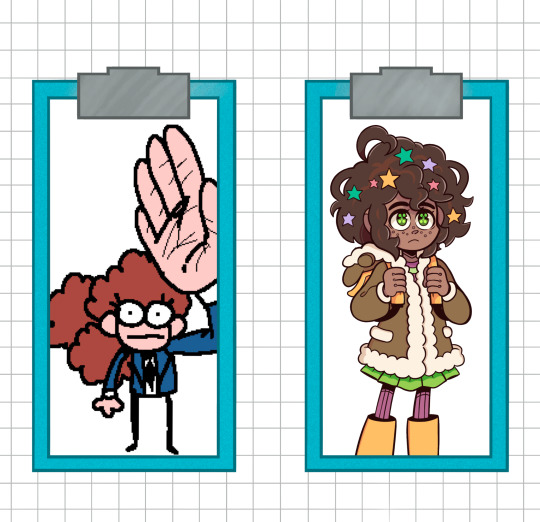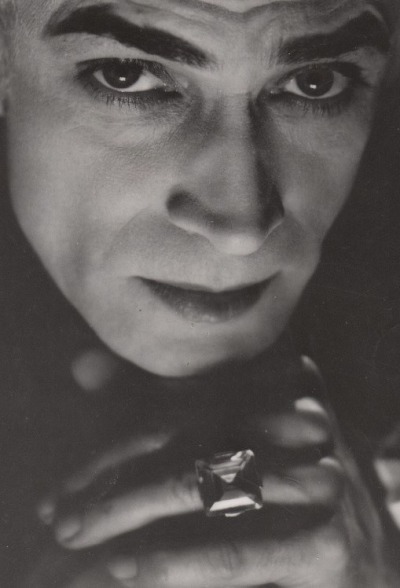#ROUND 3
Explore tagged Tumblr posts
Text
Round 3 - Lissamphibia - Urodela




(Sources - 1, 2, 3, 4)
Order: Urodela
Common Name: “salamanders”
Families: 9 - Cryptobranchidae (“giant salamanders”), Hynobiidae (“Asiatic salamanders”), Ambystomatidae (“mole salamanders” and “Pacific giant salamanders”), Amphiumidae (“amphiumas”), Plethodontidae (“lungless salamanders”), Proteidae (“mudpuppies” and “Olm”), Rhyacotritonidae (“torrent salamanders”), Salamandridae (“true salamanders” and “newts”), and Sirenidae (“sirens”).
Anatomy: larval stage with gills, some aquatic species retain the gills as adults; basal tetrapod body form with a cylindrical trunk, four limbs, and a long tail; some aquatic species have reduced or absent hind limbs (image 3); moist smooth, velvety, or “warty” skin which is permeable to water and used in respiration; no claws; no ears or eardrums, but have an opercularis system allowing them to detect airborne sound
Diet: invertebrates and small vertebrates
Habitat/Range: only in the Holarctic and Neotropical regions; 1/3 of the known salamander species are found in North America, with the highest concentration found in the Appalachian Mountains region
Evolved in: Middle Jurassic; the oldest known stem-salamander (part of the clade Caudata) is Triassurus from the Triassic of Kyrgyzstan

Propaganda under the cut:
Salamanders are capable of regenerating lost limbs as well as other damaged parts of their bodies, including vital organs such as their heart, jaw, and parts of the spinal cord.
Due to their popularity in the pet trade, the Axolotl (Ambystoma mexicanum) is perhaps the most famous salamander. They are paedomorphic, maturing without undergoing metamorphosis into a terrestrial adult form, instead remaining fully aquatic with obvious external gills. They resemble larvae of the occasionally paedomorphic Tiger Salamander (Ambystoma tigrinum). Critically endangered in the wild, they originally inhabited a large lake in the Mexican highlands known as Lake Texcoco, along with a number of smaller, interconnected lakes such as Lake Xochimilco and Lake Chalco, and were abundant enough to form a staple in the Aztec diet. These lakes were mostly drained by Spanish colonists after the conquest of the Aztec Empire, leading to the destruction of most of the Axolotl's natural habitat, which is now largely occupied by Mexico City. Due to continued urbanization in Mexico City, which causes water pollution in the remaining waterways, as well as the introduction of invasive species such as tilapia and perch, the Axolotl is nearly extinct. Six adult Axolotls (including a leucistic specimen) were shipped from Mexico City to Paris in 1863, where French scientists began studying them. They were found to be able to regenerate body parts, could be artificially induced to metamorphosize, and were hybridized with Tiger Salamanders. Their success in scientific research has also led to them being prolific in the pet trade, and one restaurant in Japan even sells fried Axolotls as a menu item. Despite their large population in captivity, these Axolotls are inbred and often contain Tiger Salamander genes, and can not contribute to the tiny population of pure wild Axolotls. Lake Texcoco and Lake Chalco no longer exist, so they are native only to the freshwater lake Xochimilco, which remains a remnant of its former self, existing mainly as canals. Only 2 wild Axolotls were spotted in 2013, after months of searching. Currently, the Lake Texcoco Ecological Park is being established to restore natural spaces to Mexico City, and hopefully provide a home for the Axolotl and other Mexican biodiversity.
The similarly critically endangered Anderson's Salamander (Ambystoma andersoni), from Zacapu Lagoon in the Mexican state of Michoacán, is one of the few species of living amphibians to occur in brackish or salt water.
Salamanders of the family Plethontidae have tongues that reach up to 80% of their body length, are attached to their skeleton, and fire ballistically at prey in less than 20 milliseconds.
Slimy Salamanders (Plethodon glutinosis) do not lay their eggs in water, so they stay near them to keep them from drying out, as well as to defend them from predators.
The largest living lissamphibian is the South China Giant Salamander (Andrias sligoi) (image 2), with the largest known individual having been 1.8 m (5.9 ft) long. It is critically endangered due to habitat loss, pollution, and overcollection, and its use in traditional medicine and status as a delicacy has led to it being farmed for meat. It is hoped that this will take the heat off the wild salamanders, though wild salamanders are still often caught to bolster breeding populations in meat farms. It is unknown if any South China Giant Salamanders still exist in the wild, and those on farms are likely hybridized, as Andrias species are often caught indiscriminately and are able to interbreed. Of the known individuals that survive in zoos, all are males, and are nearing the end of their natural lifespans.
The Eastern Newt (Notophthalmus viridescens) is perhaps best known for its striking, land-dwelling juvenile stage which is colloquially called a Red Eft. Eastern Newts have three stages of life: the aquatic larva/tadpole, the terrestrial Red Eft, and the aquatic adult. Having a terrestrial juvenile stage allows young Eastern Newts to disperse to new ponds. They will spend 2-3 years in the Red Eft stage before choosing a pond and transforming into an adult.
The Olm, or Proteus (Proteus anguinus) (see gif above), is an paedomorphic cave-dwelling salamander, and the only exclusively cave-dwelling chordate found in Europe. It is entirely aquatic, eating, sleeping, and breeding underwater, as well as adapted for life underground in complete darkness. The Olm's eyes are undeveloped, leaving it blind, while its other senses, particularly those of smell and hearing, are more acutely developed. They can also sense both electric and magnetic fields. They have unpigmented skin, but will develop color if exposed to weak light for a few hours a day. They can live to be 100 years old, and go for years without food. This slow metabolism allowed one tracked Olm to stay in same spot for over 7 years! In the 1600s, Olms washed up from the underground waters were believed by local people to be the offspring of a cave dragon. The Olm is a symbol of Slovenian natural heritage, and was depicted on the Slovenian tolar coin, as well as being the namesake of the oldest Slovenian popular science magazine, Proteus, first published in 1933.
64 notes
·
View notes
Text
@is-the-post-reliable
They are really awesome and source everything they use.
@facts-i-just-made-up
They're a good lesson in fact checking the bare minimum (looking at least at the blog name)
5K notes
·
View notes
Text


#tumblr 2025#tumblr sexyman#tumblr sexyman contest#tumblr sexyman contest 2025#tumblr polls#tumblr sexymen poll#tumblr sexyman tournament#tumblr sexyman 2025#round 3#luigi nintendo#sans undertale
700 notes
·
View notes
Text
ROUND 3: MATCH 2
Bonetrousle vs CORE



#undertale ost tournament#undertale ost#undertale music#undertale#toby fox#knockout stage#polls#round 3#match 2#bonetrousle#papyrus#core#Bandcamp
1K notes
·
View notes
Text
Best Character Stuck in a Timeloop


Propaganda for Flowey:
We don't see his resets directly but we know he's done this potentially hundreds if not thousands of times, doing every possible thing he can and pretty much losing sight of who he was at the start. His loops are fully self inflicted and he could've stopped any time he wanted (and frisk DID eventually fall down and take the timeline from him!), but he still remembers their resets, too. Second, worse timeloop go
------------------------------------
Not only does Flowey have timeloop trauma, that trauma makes him serve as a narrative foil to The Player Themselves. I know UT is overhyped but this is still the coolest thing ever to me.
Propaganda for Ángel:
dude experiencing a time loop but he's not the main character so sometimes he says things and the main character is like ???woah? and i think that's really fun.
------------------------------------
Wanted to be silly and see the guy who he bought a company for, was instead forced to watch the guy he fell in love with (plus his friend) die over and over again and lose all of the good memories they had together <\3 (btw play detective beebo it’s free on itchio!)
------------------------------------
( brief beebo spoilers in here-> ) Ángel is the only one that naturally remembers the loops (aside from the main antagonist). He has the energy of a wet cat. He's hopelessly in love with the protagonist and goes to drastic lengths to make sure he's safe. He wants to be a youtuber. He's into men. He says poggers and swag canonically in game to "connect with the kids" & is told to stop promptly after. He is thirty years old.
------------------------------------
Ángel propaganda:
•gay
•adhd
•trauma
•he used to be a jewelry thief called Dominion
•he's dating the detective that was really close(totally) to catching him one time. Said detective also dissed his theif outfit
•parental issues
•faked a will and stole his father's company
•wettest cat to ever wet
•gave away his company
•is a YouTuber named Seraphim777 now
•has an orange cat named Mozilla Firefox(well, it's Beebo's cat, but I'm counting it as a shared child)
•has beef with a child
Vote Ángel Valdivia pretty please
333 notes
·
View notes
Text
Overworked Blorbo Battle Round 3 Poll: 11

#tournament polls#susan taxpayer#punkitt#epithet erased#ee#susan taxpayer punkitt#molly blyndeff#molly epithet erased#epithet erased molly#molly ee#ee molly#round 3#round 3 wave 2#tournament poll
5K notes
·
View notes
Text


260 notes
·
View notes
Text


Propaganda
Peter Falk (The Great Race, Robin and the 7 Hoods)—let me just quote Frank Capra: "the entire production was agony ... except for Peter Falk. He was my joy, my anchor to reality. Introducing that remarkable talent to the techniques of comedy made me forget pains, tired blood, and maniacal hankerings to murder Glenn Ford (the film's star)." i also just find scrungly little guys to be the peak of attraction.
Conrad Veidt (The Cabinet of Dr. Caligari, The Man Who Laughs)—the ultimate goth boy! as well as classics like the cabinet of dr caligari, the man who laughs (which his character in was the visual inspiration for the joker) and casablanca, he starred in the german polemic melodrama different from the others in 1919 in one of the first sympathetic portrayals of gay characters in cinema, co-written by the gay researcher & activist magnus hirschfeld much of whose pioneering research on human sexual diversity was destroyed by the nazis
This is round 3 of the bracket. All other polls in this bracket can be found here. Please reblog with further support of your beloved hot sexy vintage man.
[additional propaganda submitted under the cut]
[editor's note: I received such an enormous volume of propaganda for Veidt I could only include some of it here—and unfortunately Tumblr isn't letting me repost any gifs at all, which I didn't expect! Please don't be offended if something you sent in didn't make the cut.]







"Just look at him your honor. Ich würde"
Submitted: Tumblr thread on Veidt
Submitted: Tumblr post on Veidt
Peter Falk propaganda:

"listen Peter Falk saved the day for me in robin in the 7 hoods. he saved me in it's a mad mad mad mad world. he damn right resuscitated me in the great race. every movie this man is in is made better by his presence and he should eat the competition alive."
Submitted: "1:56:30 on for Peter Falk's ass in It's a Mad, Mad, Mad, Mad World. yes he falls off a building yes he drives a cab yes he hates the cops"
1K notes
·
View notes
Text



... in Strangerville 🌵 | next
#the sims 4#sims 4#ts4#sims 4 screenshots#ts4 screenshots#ts4globetrotter#globetrotter challenge#ts4 globetrotter#round 3#strangerville#sims 4 strangerville#the worst edit you'll ever see#sims 4 edit#poor stone#😭
277 notes
·
View notes
Text
Round 3 - Lissamphibia - Anura




(Sources - 1, 2, 3, 4)
Order: Anura
Common Name: “frogs”
Families: 54 - Ascaphidae (“tailed frogs”), Bombinatoridae (“flat-headed frogs” and “firebelly toads”), Alytidae (“painted frogs”), Leiopelmatidae (“New Zealand primitive frogs”), Megophryidae (“goose frogs”), Pelobatidae (“European spadefoot toads”), Pelodytidae (“parsley frogs”), Pipidae (Pipid frogs), Rhinophrynidae (“Mexican burrowing toads”), Scaphiopodidae (“American spadefoot toads”), Heleophrynidae (“ghost frogs”), Allophrynidae (“Tukeit Hill frogs”), Alsodidae, Batrachylidae, Bufonidae (“true toads”), Brachycephalidae (“saddleback toads”), Caligophrynidae, Ceuthomantidae (“emerald-barred frogs”), Craugastoridae (“fleshbelly frogs”), Eleutherodactylidae (“rain frogs”), Neblinaphrynidae, Strabomantidae (“cloud forest landfrogs”), Centrolenidae (“glass frogs”), Ceratophryidae (“common horned frogs”), Cycloramphidae, Dendrobatidae (“poison dart frogs”), Aromobatidae (“cryptic forest frogs”), Hemiphractidae, Hylidae (“tree frogs” and kin), Hylodidae (“giant Neotropical torrent frogs”), Leptodactylidae (“southern frogs”), Odontophrynidae, Rhinodermatidae (“Darwin’s frogs”), Telmatobiidae, Calyptocephalellidae, Limnodynastidae (“Australian ground frogs”), Myobatrachidae (“Australian water frogs”), Nasikabatrachidae (“purple frogs”), Sooglossidae (“Seychelles frogs”), Arthroleptidae (“African tree frogs”), Ceratobatrachidae, Conrauidae (“slippery frogs”), Dicroglossidae (“fork-tongued frogs”), Hyperoliidae (“sedge frogs”), Microhylidae (“narrow-mouthed frogs”), Micrixalidae (“dancing frogs”), Nyctibatrachidae (“robust frogs”), Petropedetidae (“African torrent frogs”), Phrynobatrachidae (“puddle frogs”), Ptychadenidae (“grassland frogs”), Pyxicephalidae, Ranidae (“true frogs”), Ranixalidae (“leaping frogs”), and Rhacophoridae (“shrub frogs”)
Anatomy: metamorphosis from tailed, gilled, aquatic “tadpole” larvae; adults have no tail; longer hindlimbs than forelimbs; elongated ankle bones; webbed toes; large eyes; adhesive tongues; no external ears, eardrums are either exposed or covered by a skin membrane; smooth or “warty” skin which has a respiratory function and most can absorb water; most species can exude distasteful and toxic substances, as well as secretions to keep the skin moist
Diet: invertebrates and small vertebrates
Habitat/Range: every continent except Antarctica, with greatest diversity in tropical areas; most frogs require humid or damp environments, though some are adapted to survive in arid or cold habitats
Evolved in: Early Jurassic

Propaganda under the cut:
Frog tongues are covered in a two-phase viscoelastic fluid. When exposed to pressure, like when the tongue is wrapping around prey, their saliva becomes runny and covers the prey's body. As the pressure drops, it returns to a thick and elastic state, which gives the tongue an extra grip. Their tongue can be shot out and retracted at great speed, but is not as long as cartoons make it out to be, and is generally about 1/3 the length of the frog’s body, depending on species. Some frogs have no tongue and just stuff food into their mouths with their hands.
Frog eyes are situated on the very top of the animals’ head, and provide binocular vision over a field of 100° to the front and a total visual field of almost 360°. The distant vision of a frog is better than its near vision. Calling frogs will quickly become silent when they see an intruder or even a moving shadow but the closer an object is, the less clearly it is seen. They can also see in colour, even in very low light.
The call or croak of a frog is unique to its species. Frogs create this sound by passing air through the larynx in the throat. In most calling frogs, the sound is amplified by one or more vocal sacs, membranes of skin under the throat or on the corner of the mouth, that distend during the amplification of the call. Some frog calls are so loud that they can be heard up to a mile (1.6 km) away. Additionally, some species have been found to use man-made structures such as drain pipes for artificial amplification of their call. The main function of calling is for male frogs to attract mates. Males may call individually or there may be a chorus of sound where numerous males have converged on breeding sites. Female frogs prefer males that produce sounds of greater intensity and lower frequency, attributes that stand out in a crowd. There are other calls given by unreceptive frogs who have been mounted, calls before a rain, territorial calls meant to drive away other males, and distress calls meant to surprise or disorient an attacker.
Frogs do most of their breathing through their skin, and are able to survive without lungs. The fully aquatic Bornean Flat-headed Frog (Barbourula kalimantanensis) is the first frog known to lack lungs entirely.
Only members of the family Bufonidae are considered "true toads", but “toad” is also generally used for frog species that are terrestrial with dry, warty skin. There are numerous exceptions to this rule. The European Fire-bellied Toad (Bombina bombina) has a slightly warty skin and prefers a watery habitat, whereas the Panamanian Golden Frog (Atelopus zeteki) is in the toad family Bufonidae and has smooth skin.
The Panamanian Golden Frog is critically endangered, and most likely extinct in the wild since 2007. It was filmed for the last time in the wild in 2006 by the BBC Natural History Unit for the series Life in Cold Blood by David Attenborough, with the location of filming kept secret to protect the toads from potential poachers. The two distinct populations of the toad can now only be found in captivity, under a dedicated captive breeding program. They were nearly wiped out mainly due to the introduction of chytridiomycosis. As nothing seems to be able to control or stop the spread of chytrid, the current hope is to breed frogs that are more resilient and resistant to the fungal disease.
Chytridiomycosis is an infectious disease in amphibians, caused by the chytrid fungi Batrachochytrium dendrobatidis and Batrachochytrium salamandrivorans. It has been linked to dramatic population declines and extinctions of amphibian species in western North America, Central America, South America, eastern Australia, Tanzania, Dominica, and Montserrat. Much of the New World is at risk of the disease arriving within the coming years. It is thought to have been introduced or at least spread by imported African Clawed Frogs (Xenopus laevis) which are immune to the disease, and were once used for human pregnancy testing and thus traded in large amounts. The fungus affects the skin of amphibians, which is disastrous for animals which take in water and oxygen through their skin. As the fungus can multiply from one single microscopic spore in a water source, no effective measure is known for control of the disease in wild populations.
The colour of a frog's skin is used for thermoregulation. In cool damp conditions, the colour will be darker than on a hot dry day. The Grey Foam-nest Tree Frog (Chiromantis xerampelina) is even able to turn white to minimise the chance of overheating.
The male Hairy Frog (Trichobatrachus robustus) has dermal papillae projecting from its lower back and thighs, giving it a bristly, hairy appearance. These contain blood vessels and are thought to increase the area of the skin available for respiration. This is particularly useful for the males, as they stay with and guard their eggs until the tadpoles emerge.
Some poison frogs carry their young to place in individual water-filled bromeliads, periodically returning to each individual tadpole to deposit unfertilized eggs for them to eat. Male Darwin Frogs (Rhinoderma darwinii) carry their young in their vocal sac, keeping them safe from predators. Suriname Toads (Pipa pipa) incubate their eggs in pits on their back (if you have trypophobia you probably already know about this, but if not, don’t look it up).
The Pacific Tree Frog (Pseudacris regilla) is the only frog known to produce the onomatopoeic "ribbit" often heard in films.
During extreme conditions, some frogs enter a state of torpor and remain inactive for months. In colder regions, many species of frog hibernate in winter. Some frogs such as the Wood Frog (Lithobates sylvaticus), Moor Frog (Rana arvalis), and Spring Peeper (Pseudacris crucifer) can even survive being frozen. Ice crystals form under the skin and in the body cavity but the essential organs are protected from freezing by a high concentration of glucose. An apparently lifeless, frozen frog can resume respiration and its heartbeat can restart when conditions warm up.
The Striped Burrowing Frog (Cyclorana alboguttata) regularly aestivates during the hot, dry season in Australia, surviving in a dormant state without access to food and water for nine to ten months of the year. It burrows underground and curls up inside a protective cocoon formed by its shed skin.
The Striped Rocket Frog (Litoria nasuta) can leap over two metres (6.5 feet), a distance that is more than fifty times its body length of 55 mm (2.25 in).
The tiny Northern Cricket Frog (Acris crepitans) can "skip" across the surface of a pond with a series of short rapid jumps.
The smallest amphibian, and vertebrate, in the world is the Brazilian Flea Toad (Brachycephalus pulex) (image 2), at 8–8.4 mm long from snout to vent. Brachycephalus species (called “Saddleback Toads”) are so tiny that their vestibular systems are too small for dependable locomotion, and their balance is lost mid-air when jumping.
The Red-legged Running Frog (Kassina maculata) has short, slim hind limbs unsuitable for jumping. It can move fast by using a running gait in which the two hind legs are used alternately. Slow-motion photography shows, unlike a horse that can trot or gallop, the frog's gait remains similar at slow, medium, and fast speeds.
The Purple Frog (Nasikabatrachus sahyadrensis) from southern India feeds on termites and spends almost its whole life underground, emerging only briefly during the monsoon to mate and breed in temporary pools.
Tree frogs are very acrobatic and can catch insects while hanging by one toe from a twig or clutching onto the blade of a reed.
Some frogs in tropical rainforests are specially adapted for gliding from tree to tree or parachuting to the forest floor. One example is Wallace's Flying Frog (Rhacophorus nigropalmatus) from Malaysia and Borneo. It has large feet with the fingertips expanded into flat adhesive discs and the digits fully webbed. Flaps of skin occur on the lateral margins of the limbs and across the tail region. With the digits splayed, the limbs outstretched, and these flaps spread, it can glide considerable distances, though it is unable to take powered flight. It can alter its direction of travel and navigate distances of up to 15 m (50 ft) between trees.
Almost all frogs are poisonous, but their poisons vary. The chemicals involved may be irritants, hallucinogens, convulsants, nerve poisons or vasoconstrictors. Some frogs obtain poisons from the ants and other arthropods they eat, while others can synthesize the chemicals themselves. Some non-poisonous frogs mimic the coloration of poisonous species.
Exudations from the skin of the Golden Poison Frog (Phyllobates terribilis) are traditionally used by native Colombians to poison the darts they use for hunting. The tip of the projectile is rubbed over the back of the frog and the dart is launched from a blowgun. Two other species, the Kokoe Poison Dart Frog (Phyllobates aurotaenia) and the Black-legged Dart Frog (Phyllobates bicolor) are also used for this purpose, though they are less toxic and less abundant than the Golden Poison Frog.
The alkaloid epibatidine, a painkiller 200 times more potent than morphine, is made by some species of poison dart frogs. Other chemicals isolated from the skins of frogs may offer resistance to HIV infection. Dart poisons are under active investigation for their potential as therapeutic drugs.
Illicit drug use by licking the skin of the Colorado River Toad (Incilius alvarius) has been reported in the media, but this may be an urban myth. Typically, the skin secretions are dried and then smoked.
The Han people of China depict a legendary bullfrog, Jin Chan, sitting on a pile of traditional Chinese cash, with a coin in its mouth. According to feng shui beliefs, a Jin Chan charm helps attract and protect wealth, and guards against bad luck. The ancient Egyptians depicted the god Heqet, protector of newborns, with the head of a frog. For the Mayans, frogs represented water, crops, fertility and birth and were associated with the god Chaac.
The Mountain Chicken (Leptodactylus fallax), a frog so named because of its taste, is now critically endangered in part due to human consumption, as well as habitat loss and chytridiomycosis.
Frog populations have declined dramatically since the 1950s. More than 1/3 of frog species are considered to be threatened with extinction, and more than 120 species have become extinct since the 1980s. As all frogs depend on water to survive, habitat loss and pollutants are a significant cause of frog population decline. Other causes are heavy traffic in their environments, increased UVB radiation, the introduction of invasive species, and infectious diseases, such as ranovirus and the aforementioned chytridiomycosis. Environmental scientists believe amphibians, including frogs, are good biological indicators of broader ecosystem health because of their intermediate positions in food chains. The frogs are the “canaries in the coal mine”, and their decline is a signal of possible ecosystem collapse.
87 notes
·
View notes
Text
@doyoulikethissong-poll
“Genuinely love the idea. After the poll is over, the song's title and artist get revealed, and you can find a lot of cool music that way.”
@one-time-i-dreamt
“people sometimes dont read the URL and think that the dream is something that actually happened. creates confusion and the funny”
5K notes
·
View notes
Text


#tumblr 2025#tumblr sexyman#tumblr sexyman contest#tumblr sexyman contest 2025#tumblr polls#tumblr sexymen poll#tumblr sexyman tournament#tumblr sexyman 2025#round 3#sidon#agent stone
911 notes
·
View notes
Text


Reblog for a bigger sample size.
#south park#stan marsh#kyle broflovski#style#stan x kyle#stan VS kyle#if you will#tcbt24#tcbt#character polls#character tournament#round 3
282 notes
·
View notes
Note
So what other questions has Luciano been asking Kuro at 4am? 😂

kuro: i think he calls me just to hear a rational voice that late at night
#kuro answers#2p italy#2p japan#2p hetalia#2ptalia#hws italy#hws japan#draw#round 3#edit: forgot his earrings oops
163 notes
·
View notes
